Latest News From Health Monitoring
Keeping you up to date on recent initiatives, software enhancements, and the national conversation about public health
Keeping you up to date on recent initiatives, software enhancements, and the national conversation about public health
Superstorm Sandy’s effects may linger longer than expected, from a public health perspective. According to a November 8th article on Accuweather.com, Sandy may have long-term impacts on public health.
The article cites Patrick Kinney of the Mailman School of Public Health at Columbia University, who states that threats may still emerge – even though the storm is long gone. “This particular storm, I think we’re still learning what the health impacts specifically were,” he states.
Kinney cites patterns similar to previous storms – most initial deaths were from flooding. This was followed by fatalities that occurred due to debris removal, fire, or electrical damage. “From a longer-term perspective, you start looking at things like the effects of the power outage: What does that mean for the spoilage of food? For the contamination of the water supply? You also worry about access to routine medical care,” according to Kinney.
The article also addresses issues such as an inability to access medication in the storm’s aftermath – leading to illness and increased visits to hospital emergency rooms.
Read the complete article here. And check back to read about what we learned by analyzing the community health surveillance data collected by EpiCenter during and after the storm.
Weather forecasters are predicting that the remnants of Hurricane Sandy will hit the east coast hard this week—a one/two punch of a winter weather system and weakening hurricane. Utilizing Community Health Surveillance during this time will help public health departments to prepare, monitor, investigate, and respond to any threats.
In the fall of 2011, New Jersey faced a similarly daunting weather emergency when Hurricane Irene came barreling up the coast. New Jersey utilized the EpiCenter Community Health Surveillance system, and its custom classifiers functionality, to learn more about a specific after-effect of the hurricane—an increase in carbon monoxide poisoning due to the use of portable gas-powered generators.
Teresa Hamby, MSPH, Data Analyst in the Communicable Disease Service of the New Jersey Department of Health & Senior Services, presented the findings of the carbon monoxide/hurricane connection at the CSTE conference in Omaha this year—and discussed how the findings will be used in an article this past summer.
According to EMR Daily News, market research company TechNavio prepared a report stating that analysts believe that the EHR Systems market in North America will see an annual growth rate of 7.85% through 2015.
“One of the key factors contributing to this market growth is the increase in government support,” according to the article.
The findings were presented following an in-depth market analysis with input from industry experts. EMR Daily News states that issues addressed in the report include key market trends, challenges to market growth, key vendors in the market space, and strengths/weaknesses of those key vendors.
Read more at EMR Daily News or download the complete report.
It’s been nearly 40 years since Nancy Reagan encouraged Americans to “just say no” to misuse of drugs. But the Obama administration has recently issued a new “just say no” statement—stating it will not tolerate cheating when it comes to Medicaid Meaningful Use reimbursements.
The next month could be the start of some big changes in healthcare IT. As public health professionals know, politics plays a major role in healthcare IT funding—and depending on which candidate is elected, things could continue down the same path or move in a new direction.
The American Health Information Management Association (AHIMA) held its annual conference at the beginning of October, and the topic of Electronic Health Records (EHRs) was high on the discussion list.
Our mission: Provide services that focus healthcare resources on existing and emergent threats to community health.
Our customers: State and local public health departments and health systems. We currently serve Connecticut, New Jersey, Pennsylvania, Ohio, Wyoming, and several counties in California, covering a total of more than 40 million people.
What we do: Monitor real-time health-related data for community health indicators. We collect data from nearly 600 hospitals and 3,600 ambulatory systems.
Support email:
support@health-monitoring.com
Emergency support: 1 (844) 231-5776
Additional guidance:
EpiCenter User Manual
700 River Ave., Suite 130
Pittsburgh, PA 15212
Corporate office: 1 (412) 231-2020
General calls: 1 (844) 231-5774
Emergency support: 1 (844) 231-5776

